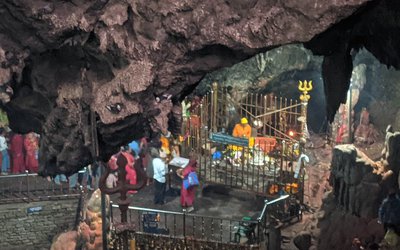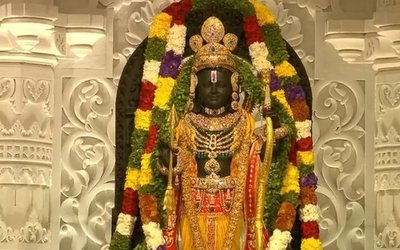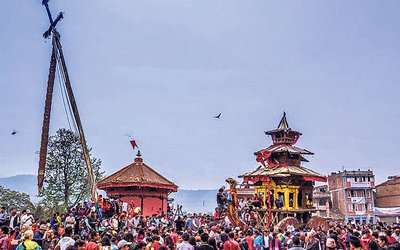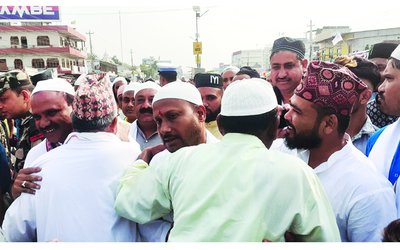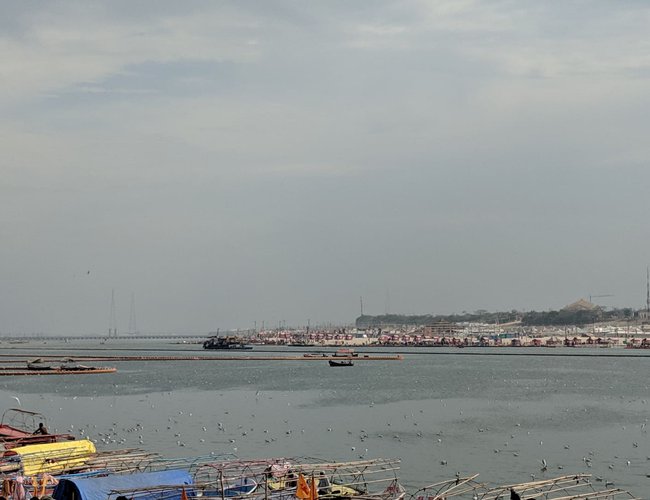
As Mahakubmbha Mela close to an end on March 11, last day of Shahi Sanan on Shiva Ratri, there were rush of Hindu devotees from all over India and Nepal. Although Kumbha Mela organizes in four different places in major rivers in India, Prayag Raj has its own significance and importance.
Despite far-away from Nepal, thousands of Nepali Hindu devotes also visited Kumbh. As buses and other vehicles available from Sunauli, a border town, Nepalese devotees were also reached holy place easily.
Like all the visitors like me, the name Kumbha has itself carried a great meaning and religious importance. With easily connected from Nepal through vehicle, I have decided to take journey to Kumbh.
With the well constructed new highways, it took us almost 12 hours driving from Sunauli, Nepal-India border town to Kumbha by a rented car. Touching the river banks and water of Gange along with millions of devotees give spiritual importance for me as well.
Thanks to well managed system by Utter Pradesh Government, pilgrimage like me has nothing to worry. Chief minister of Utter Pradesh Yogi Aditya Nath, who is himself a saint, has made all his efforts to make the festival great.
The day when I reached at Kumbh Prime Minister of India Narendra Modi along with his cabinet colleague came to take dip in Prayag Raj. Despite the visit of Prime Minister, devotees did not face any difficulty to reach at Prayag.
Although one needs to walk almost three kilometers from nearest car park to the Prayag to take dip, everything is well organized. Tea stalls, stalls for lost and found and all other arrangements were there.
By placing the place clean all 45 days, the organizers have shown their own capability. Praising the hard work of sanitation workers, Prime Minister Narendra Modi washed the foot of workers under Sanitation Department of Kumbha Mela organizing committee.
Organizers expected 30 million bathers on the peak bathing day of February, according to NDTV. I have been to Prayag Raj and I cannot imagine how these many millions could be there at once without all functions seizing up.
Why Kumbha?
Why100 million people spend time and money to bathe in the Ganges river? It is simple. Worshippers, who believe a dip in the holy waters cleanses them of their sins. “I have washed off my sins”. “I wash away all my sins, from this life and before,” said wandering ascetic Swami Shankranand Saraswati, 77, shivering naked in the cold.
The Kumbh Mela at Prayag takes place for approximately 55 days, spread over thousands of hectares around the sangam area, and becomes the greatest of ephemeral city in the world. Regularity of this celebration continuing since ancient times is unique in itself. Ever increasing pressure of populace and expanding cities tend to engulf the rivers and events like Kumbh, graces the rivers with the profound status of creators of the world. There is a deeply enrooted feeling of devotion and faith flowing in the veins of every Indian since eternity.
The Kumbh Mela at Prayag is widely considered as the most significant among all the Kumbh festivals held at other locations. It is considered as the source of light and knowledge. It is believed that Prajapati Bramha performed Ashvamedha Yajna at Dashashvamedha Ghat situated at the confluence of the Ganga and Yamuna and created the universe due to which it is the most famous and significant among all other Kumbh festivals.
In Prayagraj, hearing the word “Kumbh” creates the picturesque vision of Triveni sangam in one’s mind. At the sacred confluence of rivers, huge multitudes filled with sense of devotion move like waves in the ocean.
‘Shahi Snaan’ of Akharas, chanting of Vedic mantras and elucidations of religious hymns in the Pandaals, proclamations of knowledge, Tatvamimansa by rishis, spiritual music, mesmerizing sounds of instruments, holy dip in the sangam with utmost devotion fills the heart of devotees with immense joy. Also, prayers are offered at many divine temples exhibiting the greatness of Prayagraj Kumbh.
The Kumbh Mela at Prayag is very different as compared to Kumbh at other places due to many reasons. Firstly, the tradition of long-term Kalpvas is practiced only in Prayag. Secondly, the Triveni Sangam is considered as the centre of the earth in few scriptures. Thirdly, Lord Brahma performed the Yajna here for creating the universe. Fourthly, Prayagraj is called the shrine of pilgrimages, but the most important reason is that the significance of performing rituals and tapas at Prayagraj is of highest among all pilgrimages and provides one with the highest virtue.
Why Kumbha Is Important?
Maharshi Markandeya in ‘Matsya Purana’ told Yudhishtra that this place is specifically protected by all the Gods. Residing here for a month and practicing complete asceticism, remaining celibate and duly performing oblations for his deity and ancestors fulfils all the desires. It is believed that an individual who takes the holy dip in the sacred waters relieves his/her ten generations from the cycle of rebirth, and hence, achieving salvation. Moreover, it is said that just by providing services to pilgrims at Prayag during Kumbh will help an individual to gain redemption from temptation. Prayag is visited by tens of millions of pilgrims because these beliefs. Saints, ascetics and their followers pay their respect and perform various traditional rituals at Triveni sangam. The amazed devotees line up to watch the rituals being performed.
The origin of Kumbh Mela was transcribed by the 8th-century philosopher Shankara. The founding myth of the Kumbh Mela points out to the Puranas (compilation of ancient legends). It recounts how Gods and demons fought over the sacred pitcher (Kumbh) of Amrit (nectar of immortality) called the Ratna of Samudra Manthan. It is widely believed that Lord Vishnu (disguised as the enchantress ‘Mohini’) whisked the Kumbh out of the grasp of the covetous demons who had tried to claim it.
As he took it heavenwards, a few drops of the precious nectar fell on the four sacred sites we know as Haridwar, Ujjain, Nashik and Prayag. The flight and the following pursuit is said to have lasted twelve divine days which is equivalent to twelve human years and therefore, the Mela is celebrated every twelve years, staggered at each of the four sacred sites in this cycle. The corresponding rivers are believed to have turned into Amrit at the cosmic moment, giving pilgrims the chance to bathe in the essence of purity, auspiciousness, and immortality.
The term ‘Kumbh’ comes from the root ‘kumbhak’ (the sacred pitcher of elixir of immortality). There is a mention of ‘Kumbh’ and the bathing ritual associated with it in the Rig Veda (verse 10.89.7). It speaks of the benefits of bathing at sangam during this period, elimination of negative influences and rejuvenation of mind and soul. Prayers for the ‘Kumbh’ are also expressed in Atharva Veda and Yajur Veda.
Historic evidence points towards the rule of King Harshvardhana (c.590-647 AD), as the time when Kumbh Mela got widespread recognition across the region. Famous traveler Hsuan Tsang has prominently mentioned the grandeur of Kumbh Mela in his travelogue. The traveler’s account also summarizes King Harsh’s charities at the confluence of holy rivers where he gave gifts and donations to the scholars and sanyasis. King Harsh used to hold a great quinquennial assembly on the sands of the holy confluence at Prayag and would distribute all his possessions.
Moreover, the historical texts also point towards evidence that Adi Shankaracharya established 10 Akharas, Ardha Kumbh and Kumbh Mela.
Samundramanthan and Kumbh
The story of Samudra Manthan, one of the best-known episodes in the Hindu mythology, narrated in the Bhagvad Purana states that the sacred alignments of celestial bodies directly relate to the Kumbh festival. It took 12 divine days to carry the Amrit to the heavens. As one divine day of Gods is equivalent to one year of the humans, the journey to the heavens symbolizes 12 years in human terms. That is why every twelfth year when Jupiter enters the Aries constellation on the day of the new moon in the month of Magh, the Kumbh festival is organized. Mythological studies suggest that the Kumbh festival and the Ganga are related to each other. The Ganga flows in Prayagraj but Godavari of Nasik is also called the Ganga or the Gomti Ganga. Similarly, the Shipra (in Ujjain) is recognized as the north branch, the Ganga of Kashi. From that place onwards, Shipra becomes the east branch where it assimilates with the Ganga.
Astrological
In continuation to the astrological calculation, the event of Kumbh takes place as per the following astrological positions:
When Jupiter enters the Aquarius constellation along with the Sun moving in to the Aries constellation, the Kumbh festival is held at Haridwar.When Jupiter moves in to Leo, the Kumbh festival is held at Nasik on the banks of Godavari and in the event of Jupiter moving in to Leo and the Sun entering Aries, the Kumbh festival is held at Ujjain. When Jupiter enters Libra and the Sun and the Moon remain together on Kartik Amavasya (8th month of Hindu year) then also the Kumbh Festival is held at Ujjain. When Jupiter, the Sun, and the Moon enter Cancer on lunar conjunction (Amavasya), then also the Kumbh Festival is held on the banks of river Godavari. When Jupiter enters the Aries constellation and the Sun and the Moon are in Capricorn constellation, the Kumbh festival is held at Prayagraj on the new moon day. When the Sun is in Capricorn and Jupiter moves in to Taurus, the Kumbh festival is held at Prayagraj.
The successfully holding such a big events orderly is a great contribution of Utter Pradesh Chief Minister Yogi Adityanath who do not spare any time to make Kumbha a great success. Indian Prime Minister Narendra Modi to all senior top political leaders of India, they took dip in the Kumbha expressing their faith to the religion.
Although no senior political leaders or government officials paid a visit to Kumbh, Hindu devotees from Nepal took a dip and paid respect to Kumbha and their own religion.
(From Various sources )
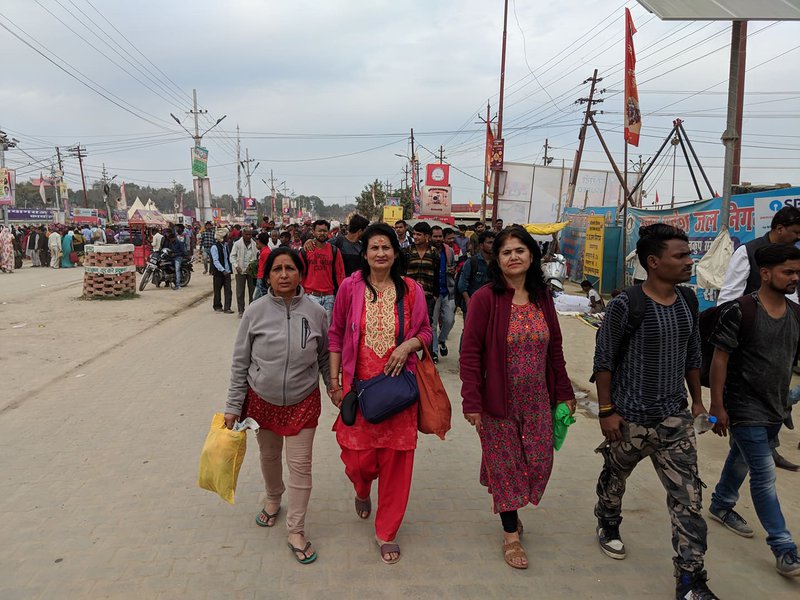
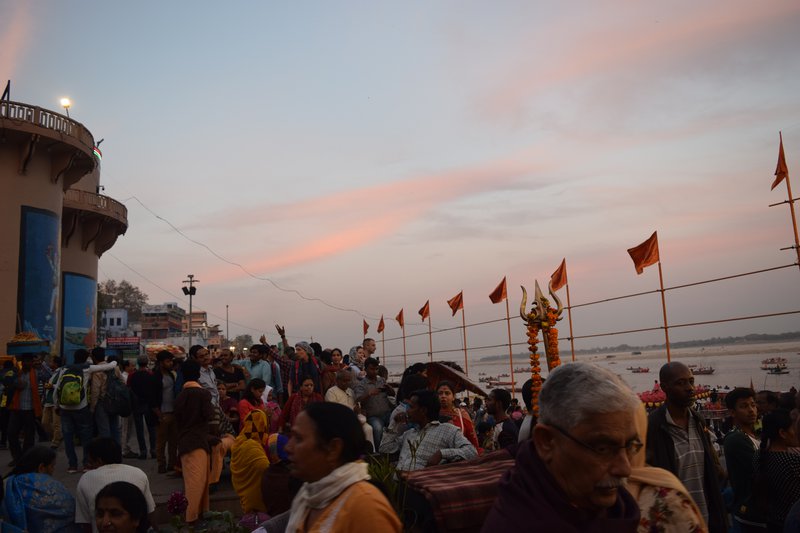
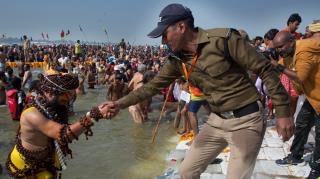

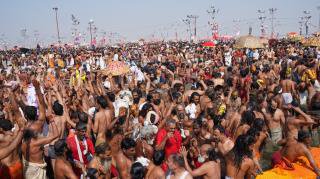
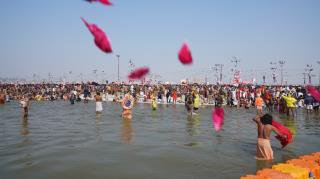
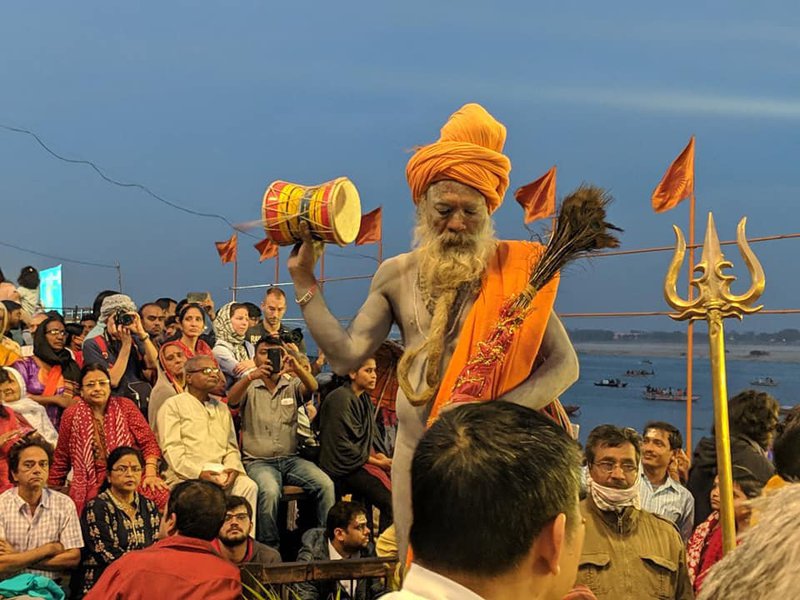

Keshab Poudel
Poudel is the editor of New Spotlight Magazine.
- IWMI: SoLAR Global Science-Policy Forum Conference
- Apr 25, 2024
- CLA: Samriddhi For Skill Development
- Apr 23, 2024
- ECONOMY: Growth At 3.3
- Apr 16, 2024
- DPM’s SHRESTHA’S CHINA VISIT High Profile, Low Key
- Apr 14, 2024
- Maha Kumbha In Barahkshetra: A Sacred Festival In Sacred Koshi (Kaushiki) River
- Apr 09, 2024


